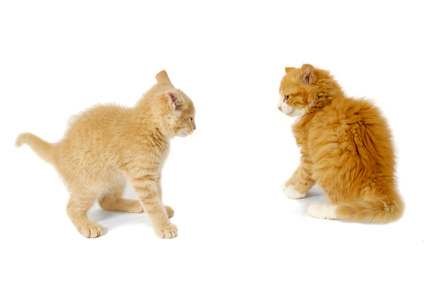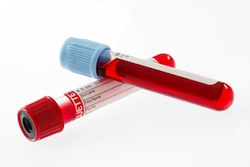Feline leukemia
 Feline leukemia is a serious viral disease. It is due to infection by the feline leukemia virus, named FeLV. It is sometimes confused with the "cats AIDS" or IVF. Although there are similarities between these two diseases, These are well two distinct diseases. There is a vaccine against feline leukemia but not "AIDS of the cat". Recall, Unlike some of the ideas received, that none of these two diseases are transmissible to man.
Feline leukemia is a serious viral disease. It is due to infection by the feline leukemia virus, named FeLV. It is sometimes confused with the "cats AIDS" or IVF. Although there are similarities between these two diseases, These are well two distinct diseases. There is a vaccine against feline leukemia but not "AIDS of the cat". Recall, Unlike some of the ideas received, that none of these two diseases are transmissible to man.
Modes of contamination
– Cats contract the FeLV virus through the saliva, of urine or at blood of cats with enzootic. Contamination is therefore when licking, scratches, bites, projections…
– Transplacental transmission of the virus is also possible, that is to say thata pregnant pussy reached enzootic may transmit the virus to all her kittens.
– The virus is resistant in the outer Middle, However indirect contamination can sometimes take place.
The incubation period feline leukemia is highly variable :
– Some cats are carriers of the virus but not show symptoms until several years later.
– Others may remain with healthy and do not declare the disease, but are nonetheless capable of transmitting the virus.
– In most cases, a cat that carries the FeLV virus holds until the end of his life. It is very rare that a cat comes to 'eliminate' the virus.
Symptoms
– The FeLV virus causes immunodeficiency : the body's defense system becomes faulty and unable to defend animals against different types of diseases (these cats then contract many other diseases as feline Infectious Peritonitis, abscesses, chronic gingivitis and stomatitis, a hemobartonellose…)
– Feline leukemia often result from anemias (decrease in the number of red blood cells), of leukopenia (decrease in the number of white blood cells).
– It may also be responsible forrenal failure Chronicle, ofabortions and it can promote the development of many cancerous tumors.
It can therefore meet the varied symptoms as of fever, weight loss, a deduction, decreased appetite, digestive disorders, respiratory, pallor of the mucous membranes…
Diagnosis
 Your veterinarian can diagnose feline leukemia through a blood test.
Your veterinarian can diagnose feline leukemia through a blood test.
This test may be made either directly to the clinic and you will then know very quickly (10 minutes) If your cat is infected with the virus or not; After the sending of the sample of blood to a laboratory that will give you an answer in a few days.
Treatment and prognosis
Unfortunately, no treatment does really eliminate the virus.
Treatments that are offered allow a remission of disease or an improvement of the comfort of the animal's life.
Treatment with a injections of interferon often allows a good improvement and an increase in the life expectancy of the cat.
In case of cancer, the treatment is done on a case by case. It can be medical or surgical depending on the type of cancer. But whatever it is, support for a cat infected with FeLV is still very delicate and the prognosis is often very reserved.
Vaccination
 Fortunately, feline leukemia vaccine exists and is effective ! Before the leukemia vaccine, It is recommended to test your cat by your veterinarian, in order to know whether it is already carrying the virus or not.
Fortunately, feline leukemia vaccine exists and is effective ! Before the leukemia vaccine, It is recommended to test your cat by your veterinarian, in order to know whether it is already carrying the virus or not.
The first injection vaccine against feline leukemia is done at the age of 8 weeks, and the 2th injection 3 to 4 weeks after. Then, as with other vaccines, one annual reminder is necessary to keep good immunity.
We remind you that vaccination can be started even on an adult cat who has never been vaccinated ! Better late than never !
§
So think about vaccinating your cat against leucosis ! You will thus avoid many problems… And don't forget step that vaccinating your pet, you protect not only your pet but also all the feline population avoiding it does contaminate other !
